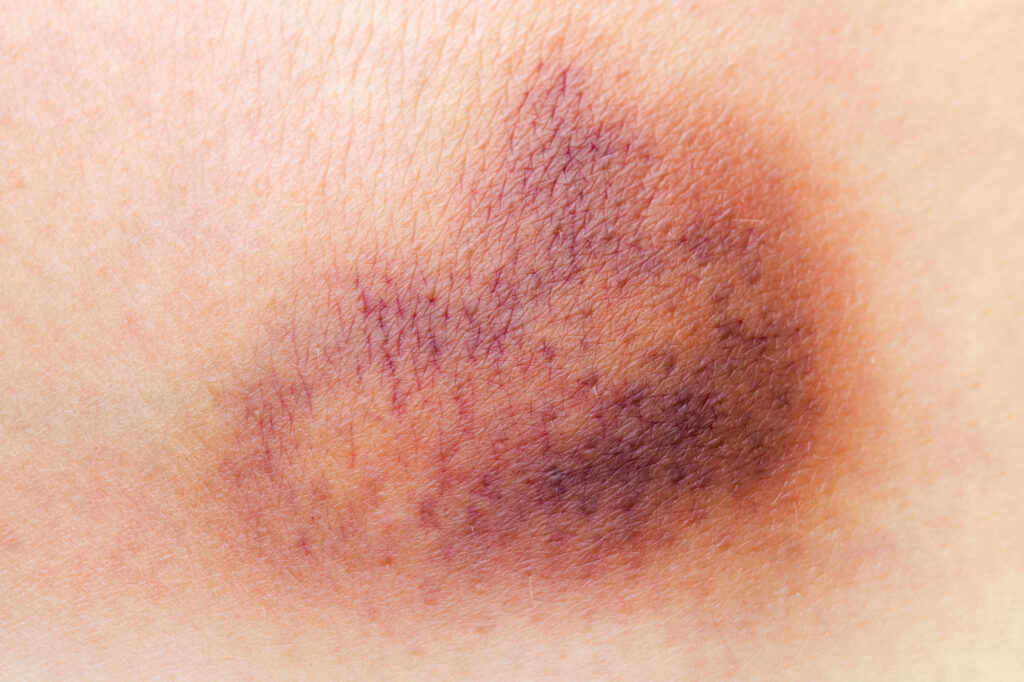What is a bruise?
You get kicked on the soccer field, drop something heavy on your toe, or bang your head on a low entryway. It might seem like nothing at the time, but all too often, you wake up the next day with a discolored bruise that is so tender to the touch, you want no one to come near. When this happens, you might reach for an ice pack or consider running to the medicine cabinet, but before you do, let’s talk about bruises and learn what causes the rainbow of colors that appears as days go by.
Bruises (or what medical doctors call “contusions”) occur when you get injured and break tiny blood vessels in the skin. These blood vessels or “capillaries”, leak into the surrounding tissue and as red blood cells gather, you can see discoloration in the area. What starts off as a red-purple injury becomes green or yellow as the body works to heal the region and metabolize or gobble up the mass of escaped red blood cells.
The tendency to bruise varies from one person to another. Despite all their falls, young children bruise less readily. They have resilient blood vessels that don’t break easily. Older people, especially those on certain medications, have delicate vessels; some find black and blue marks so frequently that they are forever wondering where the injuries come from and what it was they last bumped into. Medications that prevent blood clotting (like Coumadin) and prescription drugs that make blood vessels more fragile (like Prednisone) often contribute to the number of bruises one has.
After two to three weeks, most people find their bruises healed and their skin color returned to normal. Sometimes, however, the body will wall off the region instead of sending cells in to do the clean-up work. When this occurs the blood pools and the area swells and becomes tender. If calcium is deposited, a bony condition called myositis ossificans can occur and the tissue becomes sensitive to touch and hard.
The natural chemicals found in Arnica help to heal or prevent these unwanted complications. Flavonoids decrease the permeability of the blood vessels and polysaccharideas stimulate the process by which helper-cells clean the tissue of unwanted debris.
When using Arnica, the best results occur when you match the severity of the injury with the strength of the homeopathic medicine. A lower potency is all you need when you bang your toe into a table or get a blow to the nose in a basketball game. For more minimal injury, topical Arnica is all you need for relief.
Remember that serious trauma and spontaneous bruising calls for a complete medical evaluation. Be sure to get checked for signs of internal injury and fracture. In addition, the word “RICE” can help to remind you of other valuable tips for bruising: REST, ICE, COMPRESS, ELEVATE. The application of a cold compress and elevating the body part reduces the blood flow to the area. This lessens the amount of bleeding in the skin and reduces that size of the bruise.
Even with the utmost caution, accidents will happen at home, on the field, in the gym, and in the workplace. However, with Arnica on hand and these tips in mind, you can speed the healing and prevent long-term disability that often accompanies bruises and physical trauma. So be sure to have a supply of Arnica in your kitchen cabinet, desk drawer, purse and gym bag. Then, you too will be able to experience the beneficial healing effects that Arnica has provided since mountain climbers discovered it centuries ago.
Published in Arnica.com
